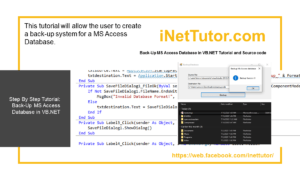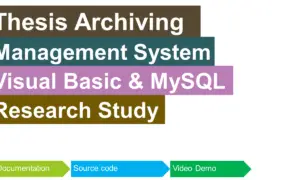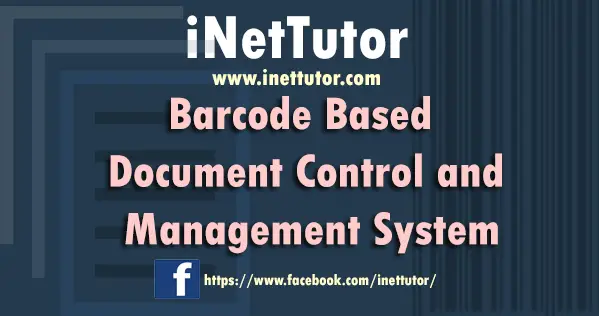Attendance System in VB.Net and SQL Server
Project Title: Attendance Monitoring System
Language: VB*Net
Database: SQL Server
About Project:
Attendance and Monitoring System project is developed using Visual Basic.Net and SQL Server Database. This project contains an Employee’s login side where an employee can Sign in for Time In and Time Out and Admin Panel where he/she can view the monthly attendance report, CRUD Employees, Manage Attendance and many more. From the employee’s login, he/she should provide Employee ID in order to turn in to the system for Attendance. The Employee or Username can be retrieved from the Admin Panel.
About System:
Admin has full control of the system, all the functions are to be performed from Admin panel. From here, he/she can view attendance, add, edit, remove and list employees, manage Attendance, Generate Reports and exporting to excel and crystal reports. The other feature is that the system automatically generates the attendance Statistics in the form of bar graph representing Number of Employee Time IN and Timeout of each month and year. While adding employees, he/she has to provide the USERNAME OR USERID and Password. The user can also update his/her profile, change passwords and profile anytime.
Screenshots of the Project
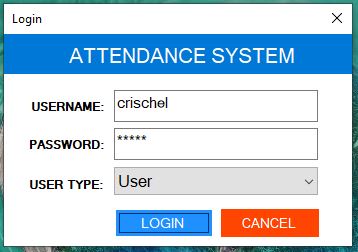
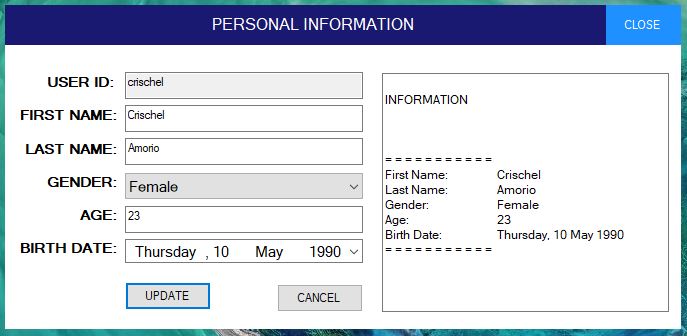
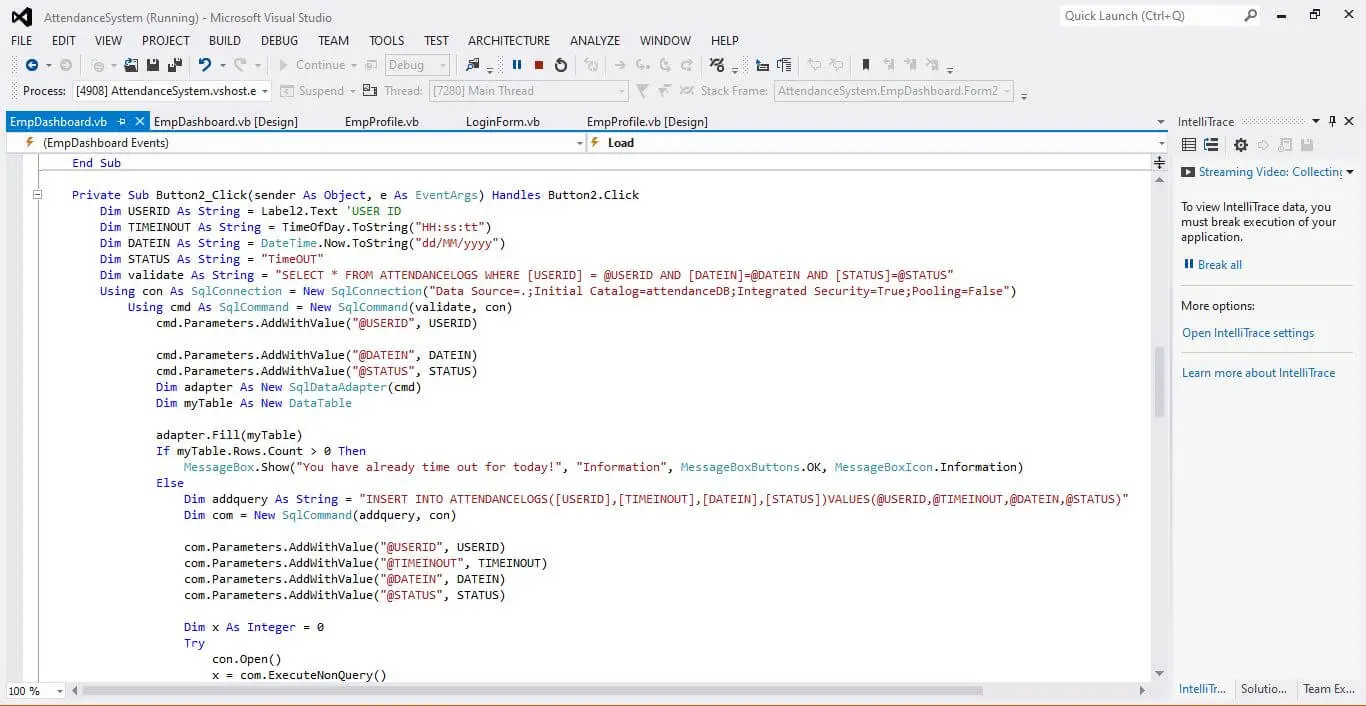
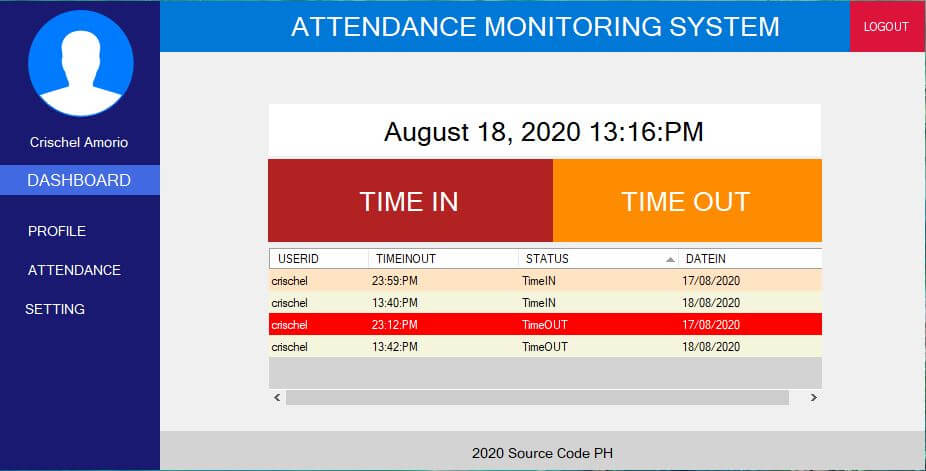
Features:
ADMIN Dashboard:
- Add, Edit, Remove and View Employees
- Add, Edit, Remove Attendance
- Manage Attendance
- Export to Excel the Attendance
- Generate Reports
- Generate Employee Attendance
- Filter Attendance using date range
EMPLOYEE Dashboard:
- View Attendance
- Update Information
- Change Password
Requirements / Data Gathering
Requirements show what elements and functions are necessary for the System and set of functionalities, constraints that the end user (who will be using the system) expects from the system. In this phase, we had conducted an interview to gather some information and asked more suggestions in order to materialize the proposed system to be used by the end user to monitor students inside school premises. All data that we were able to gather during the interview serves as our basis for the development of our capstone project. Therefore, in this phase, the requirements specifications document which described the user requirements, management and recommendation was created to serve as guide for the next phase.
Requirements / Data Analysis
All data and information that we had gathered were thoroughly examined and the revisions were made in order to meet the required user interface and design so that proposed system would become adaptable by the end user.
Software Requirements
Here are the lists of required softwares to be used during the development of the system:
- Operating System-An operating system is a program designed to run other programs on a computer. A computer’s operating system is its most important program. It is considered the backbone of a computer, managing both software and hardware resources.
- Microsoft visual studio 2010(express edition 32 bit)- is a set of freeware integrated development environments(IDE) developed by microsoft as a lightweight version of the microsoft visual studio. Express editions were conceived beginning with Visual Studio 2005. The idea of Express editions is to provide streamlined, easy-to-use and easy-to-learn IDEs for hobbyists and students, rather than professional software developers.
- Microsoft .NET 3.0 Framework -The Microsoft .NET Framework 3.0 (formerly known as WinFX), is the new managed code programming model for Windows. It combines the power of the .NET Framework 2.0 with new technologies for building applications that have visually compelling user experiences, seamless communication across technology boundaries, and the ability to support a wide range of business processes. These new technologies are Windows Presentation Foundation, Windows Communication Foundation, Windows Workflow Foundation, and Windows CardSpace (formerly code named “Infocard”). Microsoft plans to ship .NET Framework 3.0 as part of the Windows Vista operating system. In addition, Microsoft is making these technologies available on Windows XP and Windows Server 2003. The following Community Technology Preview of .NET Framework 3.0 enables you to continue experimenting with early builds of these technologies, get acquainted with the development experience, and provide feedback to Microsoft.
- Microsoft SQL Server-is a relational database management system developed by Microsoft. As a database, it is a software product whose primary function is to store and retrieve data as requested by other software applications, be it those on the same computer or those running on another computer across a network (including the Internet). There are at least a dozen different editions of Microsoft SQL Server aimed at different audiences and for workloads ranging from small single-machine applications to large Internet-facing applications with many concurrent users. Its primary query languages are T-SQL and ANSI SQL.
YT Channel:
https://www.youtube.com/c/SourceCodePHOnce/videos
You may visit our facebook page for more information, inquiries and comments.
Hire our team to do the project.
